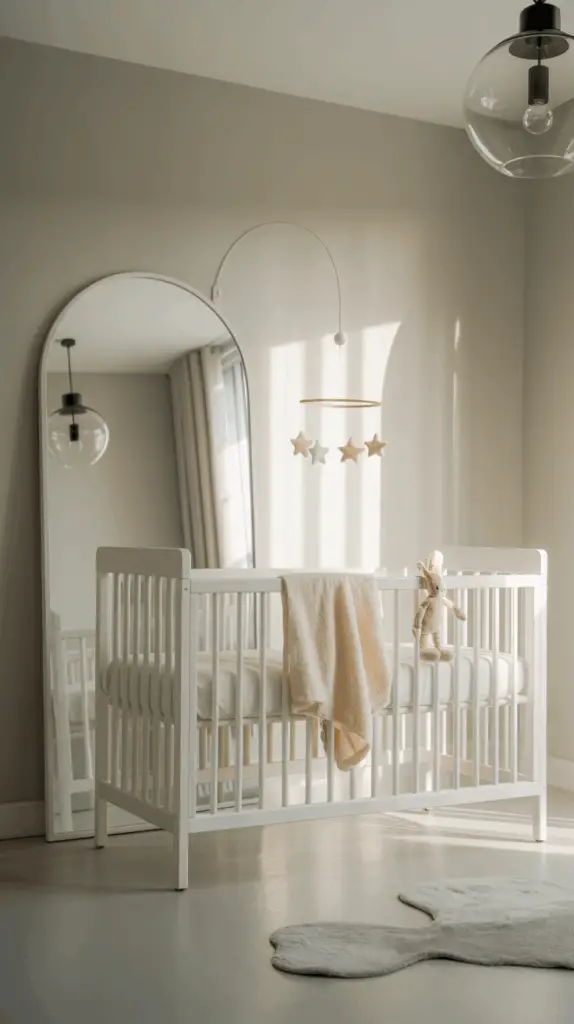Transform Your Space with Small Nursery Layout Tips for Maximum Functionality
Table of Contents
Introduction
Designing a nursery for your little one can be an exciting yet challenging task, especially when working with a small space. You want to create a cozy, functional, and stylish room for your baby, but the limited square footage often presents a real obstacle. The good news is that with the right layout tips and design strategies, even the smallest nursery can be transformed into a space that’s both practical and beautiful.
Small nursery layouts require thoughtful planning to maximize every inch. From selecting the right furniture to optimizing storage, there are a variety of techniques you can use to make your nursery feel spacious and comfortable. But it’s not just about functionality—creating a soothing, welcoming environment for your baby is just as important.
In this article, we’ll explore several small nursery layout tips that can help you make the most of your limited space. Whether you’re working with a small apartment or simply need to optimize a tiny room, these strategies will guide you in creating a functional, stylish, and cozy nursery that you and your baby will love.
1. Start with a Smart Furniture Arrangement
In a small nursery, how you arrange the furniture can make all the difference. A thoughtful layout can create the illusion of more space and ensure the room remains functional without feeling overcrowded.
Begin by choosing the essential furniture pieces: a crib, a changing table, and a comfortable chair or glider. Consider a crib that’s compact or one that can grow with your baby to save space. Place the crib in the corner of the room to make the most of the space available, while keeping it easily accessible for nighttime feedings. Positioning the changing table near the crib ensures convenience during diaper changes and late-night routines.
If you’re tight on space, look for multifunctional furniture such as a dresser with a changing table topper, or a crib with built-in drawers for storage. Keeping the room’s layout open and free of unnecessary furniture will allow for better flow and prevent it from feeling cramped.
Visual Breakdown:
| Key Element | Tip |
| Crib Placement | Position the crib in a corner to maximize space and keep it accessible |
| Changing Area | Keep the changing table close to the crib for easy access |
| Multifunctional Furniture | Choose pieces that serve more than one function, such as a crib with storage |
2. Maximize Vertical Space
When working with a small nursery, it’s essential to think vertically. Vertical storage not only helps you save floor space but also creates an organized and clutter-free environment.
Shelving is your best friend in a small room. Install floating shelves above the crib or changing table to store baby essentials like books, toys, or extra blankets. Consider wall-mounted baskets or hooks for smaller items like diapers and wipes. Opting for tall, narrow furniture pieces—such as a tall dresser or a slim bookcase—can also help utilize vertical space effectively.
Additionally, you can add height with wall decor such as framed art, mobiles, or wall decals. This not only draws the eye upward, making the room appear taller, but also adds personality and charm to the space.
Visual Breakdown:
| Storage Solution | Tip |
| Floating Shelves | Install above furniture for storage without taking up floor space |
| Wall-Mounted Baskets | Use for small items like diapers, wipes, or toys |
| Vertical Furniture | Choose tall dressers or narrow bookcases to save floor space |

3. Choose Light Colors and Reflective Surfaces
Color plays a significant role in how a small room feels. Opting for light, neutral colors can make the space appear more open and airy. Soft whites, pale grays, and pastel tones create a serene, peaceful environment while reflecting light to brighten up the room.
Consider using light-colored paint for the walls and ceiling. You can also use white or light wood furniture to complement the color palette and keep the room feeling fresh. For added depth and texture, incorporate soft metallic accents, such as gold or silver light fixtures, which can bounce light around the room, creating the illusion of more space.
Reflective surfaces like mirrors and glass can also help open up a small room. Consider a decorative mirror on the wall, or even glass light fixtures, which will make the room feel bigger and brighter.
Visual Breakdown:
| Color Scheme | Tip |
| Light Neutrals | Use pale tones like white, light gray, or pastel shades |
| Furniture | Opt for light-colored wood or white furniture |
| Reflective Surfaces | Incorporate mirrors and glass for a brighter, more spacious feel |
4. Use Smart Storage Solutions
In a small nursery, clever storage solutions are key to keeping the space organized without compromising on style. You don’t need bulky storage pieces to make a big impact; the trick is to choose pieces that blend seamlessly with the room’s decor while serving multiple purposes.
Under-bed storage is a great option for storing larger items such as baby blankets, clothing, and toys. Look for storage bins or drawers that fit beneath the crib or changing table. You can also make use of over-the-door organizers or wall-mounted hooks to store things like diaper bags, extra wipes, or hats.
Incorporating baskets or bins within shelving units is another great way to organize small items. Choose coordinating baskets that match the room’s color scheme for a neat and polished look.
Visual Breakdown:
| Storage Solution | Tip |
| Under-Bed Storage | Use bins or drawers beneath the crib for extra items |
| Wall-Mounted Hooks | Install behind the door or on the wall for diaper bags and accessories |
| Coordinated Baskets | Place matching baskets on shelves for a tidy, stylish look |
5. Keep the Floor Clear with Multi-Use Furniture
In a small nursery, keeping the floor clear and uncluttered is crucial. Multi-use furniture can help reduce the need for additional pieces, making the room feel more open and spacious. Look for furniture that combines functions to save on space without sacrificing style or comfort.
A changing table that doubles as a dresser is a great way to save space. Additionally, consider a crib with built-in drawers or a convertible crib that grows with your child. A nursery chair that also functions as a storage unit is another excellent option for maximizing space.
The key is to invest in pieces that serve multiple purposes and can adapt to your child’s changing needs as they grow.
Visual Breakdown:
| Furniture Option | Tip |
| Changing Table/Dresser | Choose a piece that combines both functions |
| Convertible Crib | Opt for a crib that transforms into a toddler bed with built-in storage |
| Multi-Use Chair | Look for a nursery chair with storage features |
6. Add Vertical Decor to Create Height
In a small nursery, it’s important to use vertical decor to create the illusion of height. This can make the room feel taller and more spacious than it actually is. Think of tall wall art, vertical storage, or a high-reaching bookshelf.
When decorating the walls, opt for artwork or prints that draw the eye upward, such as long vertical canvases or framed prints arranged in a vertical line. A tall, narrow bookshelf can also help create the illusion of height while offering much-needed storage. Additionally, hanging curtains higher than the windows can add height to the room, making it feel more open and airy.
Visual Breakdown:
| Decor Element | Tip |
| Tall Wall Art | Use vertical artwork or arrange frames in a vertical line |
| High Curtains | Hang curtains higher than the window to add height |
| Tall Bookshelves | Incorporate narrow, tall bookshelves to save space and add height |
Conclusion
Transforming a small nursery into a functional and stylish space is possible with the right design choices. By focusing on smart furniture arrangements, maximizing vertical space, and using clever storage solutions, you can create a room that feels spacious, organized, and cozy. Whether you’re working with limited square footage or simply want to optimize your space, these small nursery layout tips will help you make the most of every inch, ensuring that your little one’s room is both beautiful and functional.

